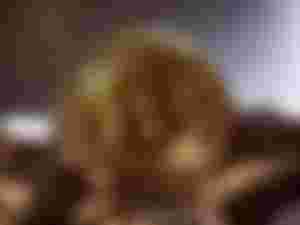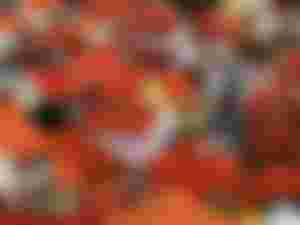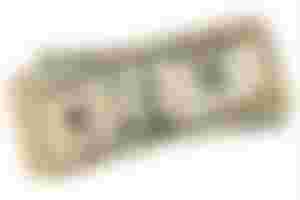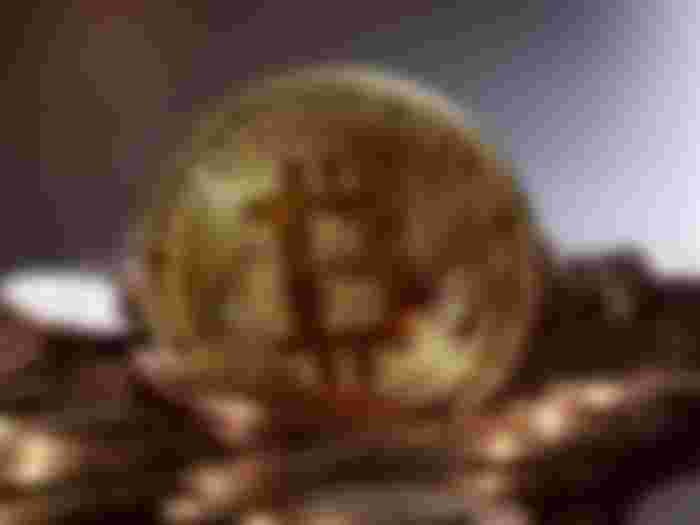Bitcoin vs. the Dollar: What’s the history of the Dollar?

Bitcoin is a cryptocurrency, which began officially on 3 January 2009. The dollar is much older. The United States, as we know, broke free from Great Britain in 1776, at a time when they were still using our system of pounds, shillings and pence (and farthings, groats and guineas).
So why did they not keep the units they were familiar with? Why did they abandon the pound and its 240 pence? And how did the dollar get its name, anyway?
This short article answers these questions. It’s a fascinating tale that will take us back to the dark, wooded, Krušné Hory mountains (The ‘Ore Mountains’ of the north-western part of the Czech Republic, hundreds of years ago. These mountains straddle the border between modern Germany and the Czech Republic.
We will home in on the town of Jachymov, then called Joachimsthal, in what was then a German- and Czech-speaking part of the ancient King of Bohemia. But first, a few lines about the formal introduction of the dollar into American life.
The United States Declaration of Independence was adopted by the ‘Second Continental Congress’ at a meeting in Philadelphia, Pennsylvania, on 4 July 1776 (American Independence Day). But the first ‘Continental Congress’, the previous year (1775) had already resolved to set up an independent, or ‘continental’ currency. There, they resolved to adopt the dollar as their us a currency. The same year, the eight-year long War of Independence began, ending in 1783.
On 2 April 1792, the United States Congress formally created the United States dollar as the country's standard unit of money. The word ‘dollar’ was already known to Americans, as the ‘eight-real’ Spanish coin was already becoming known as the ‘Spanish dollar’.
But to trace the origin of the word, we must go back to the 16th century and these Bohemian mountains around Joachimsthal, where the first-ever 'dollar' was minted in 1520:
The first of the now-famous ‘Joachimsthalers’ was a silver coin minted in 1520. Saint Joachim appeared on the front and the ‘Lion of Bohemia on the back. This coin was first minted at Jáchymov's Royal Mint House in the Czech republic.

The founder of this highly productive and influential mint was Count Hieronymus (Jerome) Schlick, a Bohemian noble, born in 1494. But we need to go back a bit further in history to see how he became to be in possession of this large area of forest, with what proved to have mineral wealth of immense value beneath the surface.
Hieronymus was the son of Count Kaspar Schlick, who achieved fame as the Chancellor to no fewer than three successive Holy Roman Emperors. The Holy Roman Empire was a collection of largely German-speaking nations, states, kingdoms, principalities, dukedoms and bishoprics, first formally established in 962AD..
Charlemagne had inherited the Kingdom of the Franks (modern day France) in 800AD, crowned by Pope Leo III in St. Peter’s, Rome, as ‘Emperor of the Romans’. In 962AD, the formal role of ‘Holy Roman Emperor’ was established. By this time the Holy Roman Emperors were establishing ever more power to appoint Bishops all over the territory of the Holy Empire. And with this came real political power. They were becoming the most powerful force on the continent of Europe.
It was under the Holy Roman Emperor Sigismund that the Schlick family, who had become a noble Bohemian family several generations earlier, achieved real power and influence. Sigismund, born in 1368, began his adult life as Prince-Elector of Luxembourg, moved on to become Prince Elector of Brandenburg, then in rapid succession became King of Hungary and Croatia, King of Germany, King of Bohemia, King of Italy, and finally, the Holy Roman Emperor from 1433 until 1437. He appointed Count Kaspar Schlick as his Chancellor.
The next two Holy Roman Emperors, Albert II, and Frederick III, both from the emerging Habsburg dynasty, both had sufficient confidence in Count Kaspar Schlick to keep him on as their respective Chancellors. And as a reward for his services, Count Kaspar Schlick was handed the ownership of vast tracts of land in north-western Bohemia.
So when Count Hieronymus Schlick was born in 1494, he inherited a huge area, mostly of forests. But even more important than that was the enormous, largely untapped, mineral wealth lying beneath his feet.
In fact, the north-western part of the Czech Republic has one of the largest collections of precious metals and minerals in the entire world. This was because the area extensive ‘faulting’. As the tectonic plates ground against each other underneath, the mountains were built up, with the magma beneath the earth’s crust, rich in metals and minerals, being thrust up in large quantities.
For example, the uranium mineral pitchblende was reported from this ore district as early as 1565. Much later, in 1896, A.H. Becquerel discovered the phenomenon of radioactivity. His famous student Marie Sklodowska-Curie (better known just as ‘Marie Curie’), recognised that pitchblende has higher radioactivity as pure uranium salts. Later, together with her husband P. Curie, they discovered two new elements: radium and polonium.
As for silver, the subject of our story, mining it began as early as the 10th century, around the town of Kutna Hora, By 1260, German miners had began to mine for silver in the mountain regions further west. But it was the young man, Count Hieronymus Schlick, and his brother Stephan Schlick, who had the vision, all-round ability and marketing skills to develop these silver mines into a major industry.
In 1516, when Hieronymus Schlick was just 22 years old, a major deposit of silver was discovered in one of the valleys he owned. Just four years later, he was to begin minting the silver coins which gave their name to the dollar. At the time, Joachimsthal was a small village of just over 1,000 inhabitants, and was actually called Konradsgrün (Conrad’s valley).
Count Hieronymus Schlick was a Roman Catholic. Many centuries earlier, the Catholic hierarchy named ‘Saint Joachim’ as the ‘Patron Saint of Mines’. Hieronymus Schlick liked the name Joachim, giving his first son that name. He renamed Konradsgrün as Joachimsthal (Joachim’s valley) after Saint Joachim in 1517.
Czech historian Jaroslav Ochec explained the situation at the time as follows: “At the time, Europe was a continent of city-states with local rulers vying for power. With no standard monetary unit among them, one of the most effective ways rulers could assert their control was to mint their own currency, and that’s what Schlick did”.
The following year (1518), the Schlicks began privately minting ‘test’ coins. They applied for permission to open a mint. The governing Bohemian Diet (Parliament) officially granted Hieronymus Schlick and his brother Stephan permission to mint his silver coins on 9 January 1520. The document, which is still preserved today, was prepared in the Czech language.
They stamped an image of Saint Joachim on the front and the Bohemian lion on the back, naming his new currency “Joachimsthalers” - indicating them as hailing from Joachim’s valley.
Other owners of land in neighbouring valleys who had access to the silver ores had also started minting their own silver coins, likewise naming their coins after their own valley, or ‘thal’. The coins were usually named after various saints.
In those days, the metal content of a coin determined its value. The standard weight of coins at that time, including silver coins, was the ounce of between 28.7 and 29.2 grams. The Schlicks hit on the idea of matching the weight and dimensions (39mm diameter) of the guldengroschen, which was widely used in central Europe. It proved an instant success. The Schlicks were ambitious. They went into mass production.
It has been reliably suggested that the Schlicks, within two decades, minted more coins than the world had ever seen before. Within just 10 years of 1520, Joachimsthal swelled I size from village of 1,000 people to a town of 18,000 people. Of these, 8,000 of them miners, working in 1,000 or more silver mines. Three years later (1533), it had become the second largest city in Bohemia, after Prague.
Demand for these coins grew exponentially. Because the Joachimsthalers’ swift success soon overtook the thalers from the other Bohemian valleys, to become the ‘must have’ currency of the time, the word ‘Joachimsthaler’ was conveniently shortened to ‘thaler’. By 1550, it was reliably estimated that some 12 million thalers minted from these mountains had spread across Europe far in excess of any other currency in use in Europe at the time.
In 1548, King Ferdinand I of Bohemia decided to acquire the Schlicks’ mint, making it one of three Royal Mints in the country, along with Prague and Kuttenberg (Kutna Hora).
Although the silver deposits in Joachimsthal were soon exhausted, the fame and usage of silver thalers spread across Europe to such an extent that by the 1560s, those who ran the Holy Roman Empire were already planning to make the thaler their standard unit of currency. Very soon, in 1566, the new Holy Roman Emperor, Maximilian II, declared that the thaler would indeed become the main coin of the realm, a decision ratified by the Leipzig Convention that same year. Just 44 years after the first ‘Joachimsthaler’ emerged from the Schlicks’ mint, it was rapidly becoming the dominant currency of the continent.
The thaler’s rise was now unstoppable. During the next 300 years the Austrian Empire of the Habsburgs grew and morphed into the even bigger Austria-Hungarian Empire in 1867, utterly dominating central Eutope. The thaler was its main unit of currency, especially the 1741 Maria Theresia thaler which for a time also became a leading trading currency.
The Dutch rijksdaalder, also named after the thaler, was first issued in 1575, and the leeuwendaalder created there later. The ‘leeuwen’, or ‘leven’ part of the ‘leeuwendaalder’‘ subsequently gave its name to coins in Bulgaria (lev), Romania (leu), and Moldova (leu).
Most cantons in Switzerland adopted the thaler in the 1500s. The first Swedish ‘daler’ coins were minted in 1534. The Norwegian ‘speciedaler’ was minted from 1560. Later Scandinavian daler coins included the Swedish riksdaler (1604) and the Danish rigsdaler (1625).
Prussia adopted the thaler in 1837 while most German states did so in 1857. In Ethiopia, the Maria Theresa thaler became became the de-facto currency in the late 18th century, and continued to be in use into the 20th century in the Horn of Africa, Eastern Africa, India and throughout much of the Arabian Peninsula.
In Spain and the Spanish colonies, the ‘Piece of Eight’ (in Spanish: Real de a ocho), became known as ‘the Spanish dollar’, named after the thaler.
Slovenia’s main unit of currency was the tolar, also named after the thaler, until they joined the European Union and then adopted the euro in 2008. In the Pacific Ocean, the Samoan ‘tālā’ is still the main currency in the islands of Samoa.
Bringing our article to a close by returning to the United States, the Spanish dollar or ‘Piece of Eight’ began to be increasingly used in the American colonies during the seventeenth and eighteenth centuries. The British authorities had to devise an equivalent value in British coinage, which was normally 6 shillings, although for a time in New England it was fixed at 6s 8d (three Spanish dollars to £1 sterling) and even reached 8 shillings per dollar at one point. There was also a Mexican dollar.
By the time of the Declaration of Independence in 1775, the Spanish dollar was increasingly replacing pounds, shillings and pence by popular usage, so it was no surprise that, at this time, the Americans decided to switch to the dollar. And of course it marked that decisive break from the ‘old’ country. Many countries had moved to the dollar by now.
It only remained, 17 years later, in 1792, for the Coinage Act to formally create the United States Mint, initially defining the United States dollar at par with the Spanish dollar, due to its impressive international reputation.

In 1944, the dollar became the world’s unofficial reserve currency, and today, according to the International Monetary Fund, the U.S. dollar makes up over 60% of all known central bank foreign exchange reserves. That makes it the de-facto global currency, even though it doesn't hold that official title. It all began in Joachimsthal.
My own article
Pictures courtesy of pixabay


